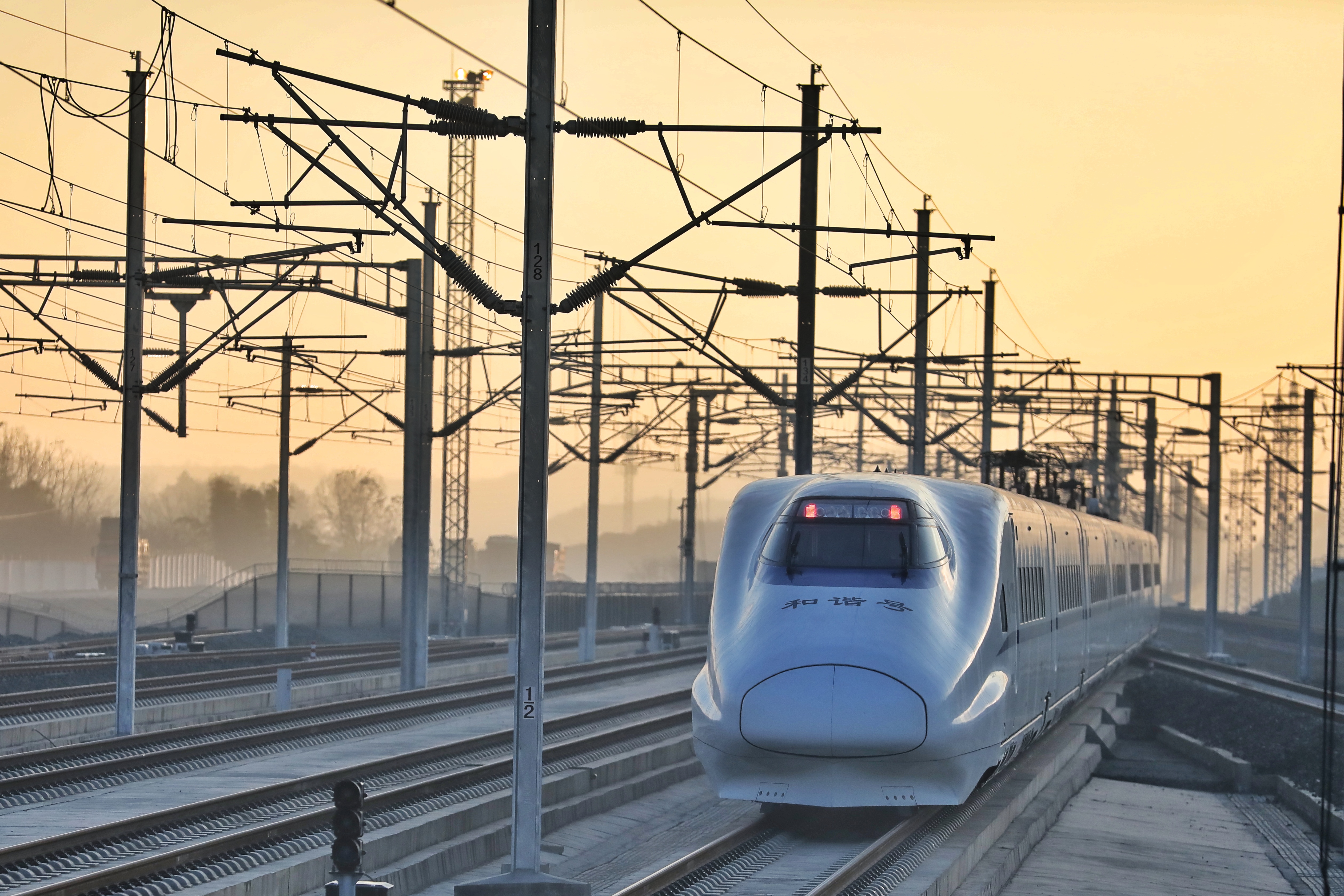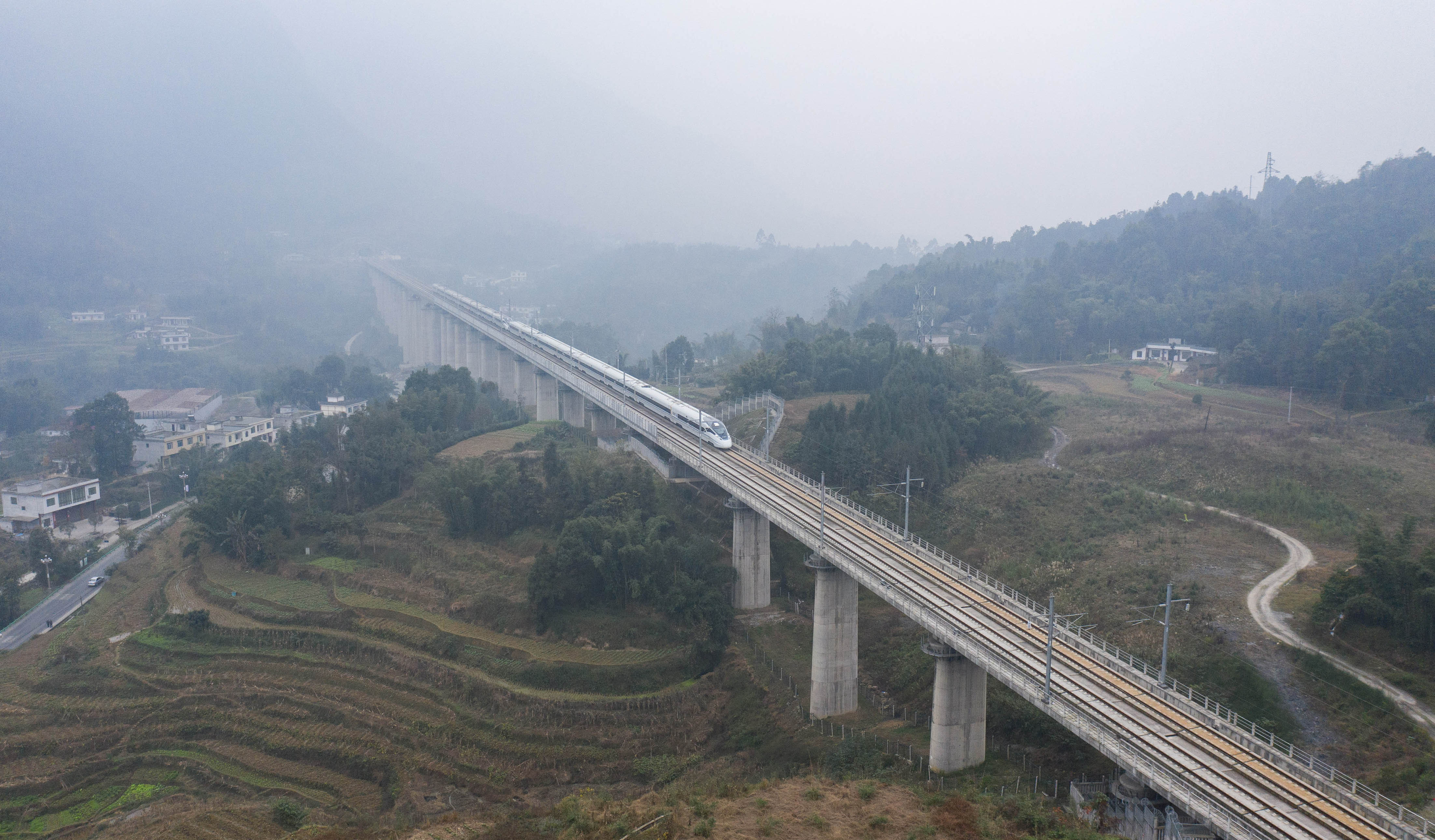High-speed rail connects major cities in SW China's mountainous regions
The 648-km-long Chengdu-Guiyang high-speed rail line was launched on Monday. Linking two transport hubs in southwest China, it is an important part of China's ambitious plan to build a high-speed railway network across the country.
At 8:28 a.m. Monday, a bullet train departed Guiyang, capital of southwest China's Guizhou province, for a largely mountainous journey that will end in Chengdu, capital of Sichuan province.
With a design speed of 250 kph, the train service marked the launch of the 648-km-long Chengdu-Guiyang high-speed rail line, an important part of China's ambitious plan to build a high-speed railway network across the country.

A bullet train of the Chengdu-Guiyang railway departs from Bijie Station in southwest China's Guizhou province, Dec. 16, 2019. [Photo/Xinhua]
The rail line links Guiyang and Chengdu, two transport hubs in southwest China, providing vast numbers of passengers in the region with a speedy pathway to eastern and southern coastal regions, said Li Yi, a main designer of the railway with China Railway Eryuan Engineering Group.
"The railway is of key significance for tourism, mineral exploration, poverty alleviation, as well as China's strategy to develop the western region," said Li.
Shang Qingli, an art group leader from Dafang county of Guizhou, arrived early at the Guiyang North Train Station for the maiden rail service with 30 members of his group.
"We will vigorously promote Dafang's tourism when we arrive in Chengdu," said Shang, adding that the launch of the railway line will help promote local tourism as well as the Yi ethnic culture.
Due to the mountainous terrain of the region, about 85% of the 648-km-long railway tracks were built on elevated bridges or through tunnels.
"In terms of geological conditions, the Chengdu-Guiyang high-speed rail line is one of the most complicated passenger rail projects in China's mountainous regions," said Zheng Tao, a designer with China Railway Eryuan Engineering Group.
Zheng said completion of the rail line attests to China's advanced know-how in high-speed railway construction, citing engineering feats in the project including ballastless slab track, a long-span steel-concrete basket arch bridge and a steel tube-concrete swivel arch bridge.

Passengers head for a bullet train of the Chengdu-Guiyang railway at Guiyang North Station in southwest China's Guizhou province, Dec. 16, 2019. [Photo/Xinhua]
The rail line is one of the first railway projects in the country whose construction strictly followed an environmentally-friendly guideline, emphasizing minimal impact on the environment and protection of wild animals and plants along the route.
For instance, it took designers three years to devise the optimal rail route across the Minjiang River in order to minimize the impact on a rare fish nature reserve in the vicinity.
In a section of the rail line passing Yuexihe scenic area in Sichuan, a variety of plants and trees have been grown along the rail tracks, under the elevated bridges and at the entrances of the tunnels.
The plants and trees can not only help solidify the soil during construction and operation of the railway but also offer a nice view compatible with the surrounding environment, said Yang Lin, an engineer of the project.

Aerial photo taken on Dec. 16, 2019 shows a bullet train running on the Chengdu-Guiyang railway in southwest China's Sichuan province. [Photo/Xinhua]
Passing through some of the most impoverished parts of the Wumeng Mountains, the new high-speed rail has been hailed by many locals as an impetus for development.
Yang Wenfen, 53, is an embroidery artisan in Shexiang Old Town, located just 1.2 km away from Dafang Train Station of the new rail line. Working at a small workshop, Yang and her 17 apprentices can make 30 sets of embroidered garments a month.
"I'd better speed up teaching my apprentices, or we will not be able to meet customer demand in the future," said Yang, anticipating an influx of tourists – and orders – into her town following the launch of the railway.
Chen Yongli, an official in Shexiang, has been busy overseeing the upgrading of the town's hospitality sector that aims to attract more tourists and prolong their stay. He reckoned that an increase in overnight visitors would greatly help with employment and sales of tourism products in the town.
"The high-speed railway offers us a once-in-a-lifetime opportunity for development. We can't afford to miss it," said Chen.

